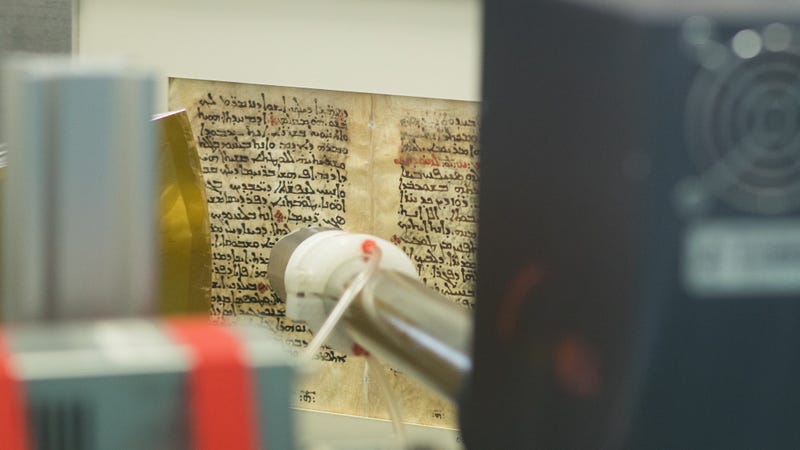If you’re a history buff, you might not know much particle physics. But the two fields share more in common than you’d think. X-rays from a high-energy lab have revealed ancient Greek medical texts that had been stripped and covered with religious writing. Scientists at the Department of Energy’s SLAC National Accelerator Laboratory have long been using high-powered x-rays at their Stanford Synchrotron Radiation Lightsource (SSRL) to analyze ancient texts. This week, they’ll be revealing the text beneath 10th-century psalms from the St. Catherine’s Monastery on the Sinai Peninsula. The hidden words were a translation of writings by the ancient Greek doctor Galen.
There’s all sorts of stuff scientists can do with these x-rays, like imaging, characterizing what something is, or revealing mysteries between objects’ surfaces. Here, the researchers reveal the ink that had been scraped off, which they can detect based on the way the x-rays react upon hitting the surface. The text contains Galen’s words translated into the ancient Syriac language a few hundred years after his death, reports LiveScience. Galen himself was a Greek doctor in the Roman empire who lived from 129 to around 216 C.E. He studied all sorts of medicine through dissecting apes (he could not dissect humans, according to Britannica) and his works remained influential into the Middle Ages. He still believed the outdated study of the four humors, but he made some important discoveries, including that arteries carried blood, not air, as had been previously believed.
Credits:
https://gizmodo.com/particle-accelerator-reveals-ancient-greek-medical-text-1823730808
https://twitter.com/CNET/status/977953255857598465

No comments:
Post a Comment